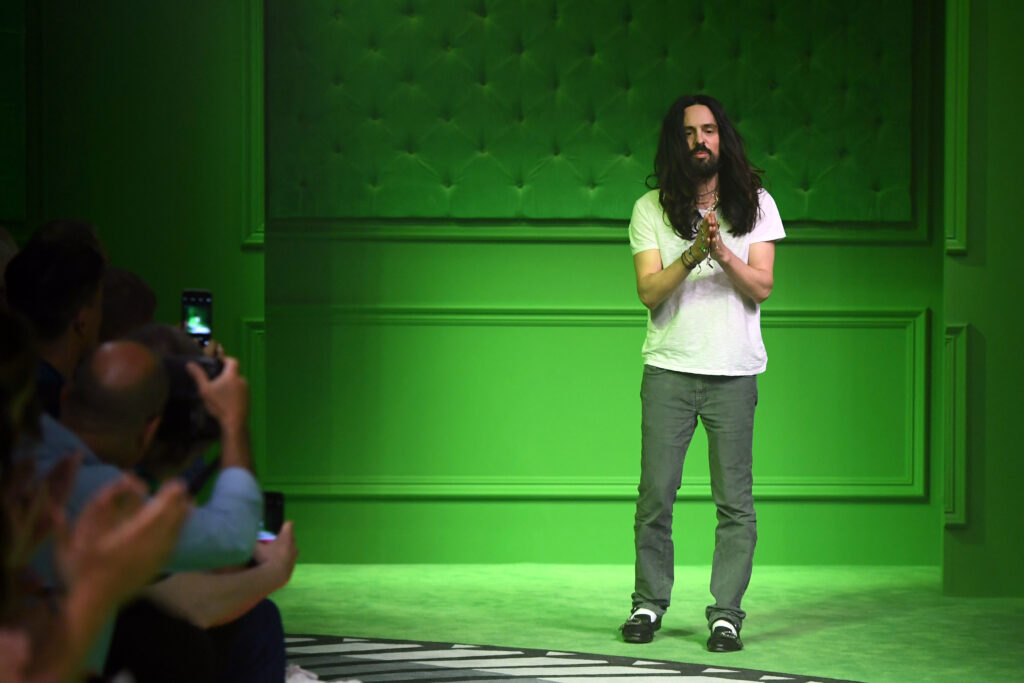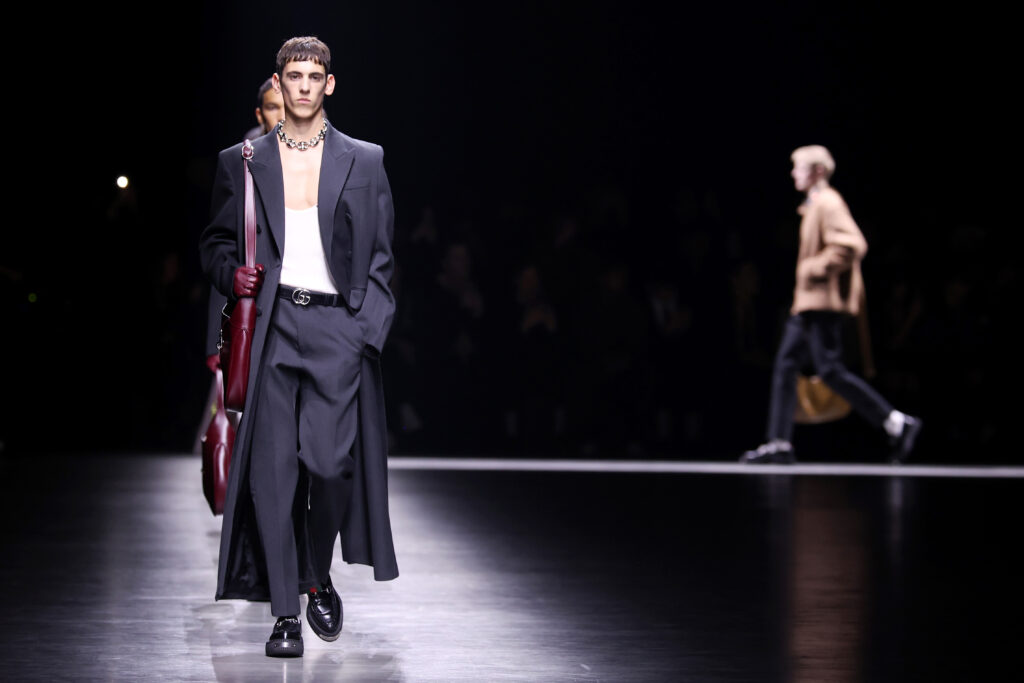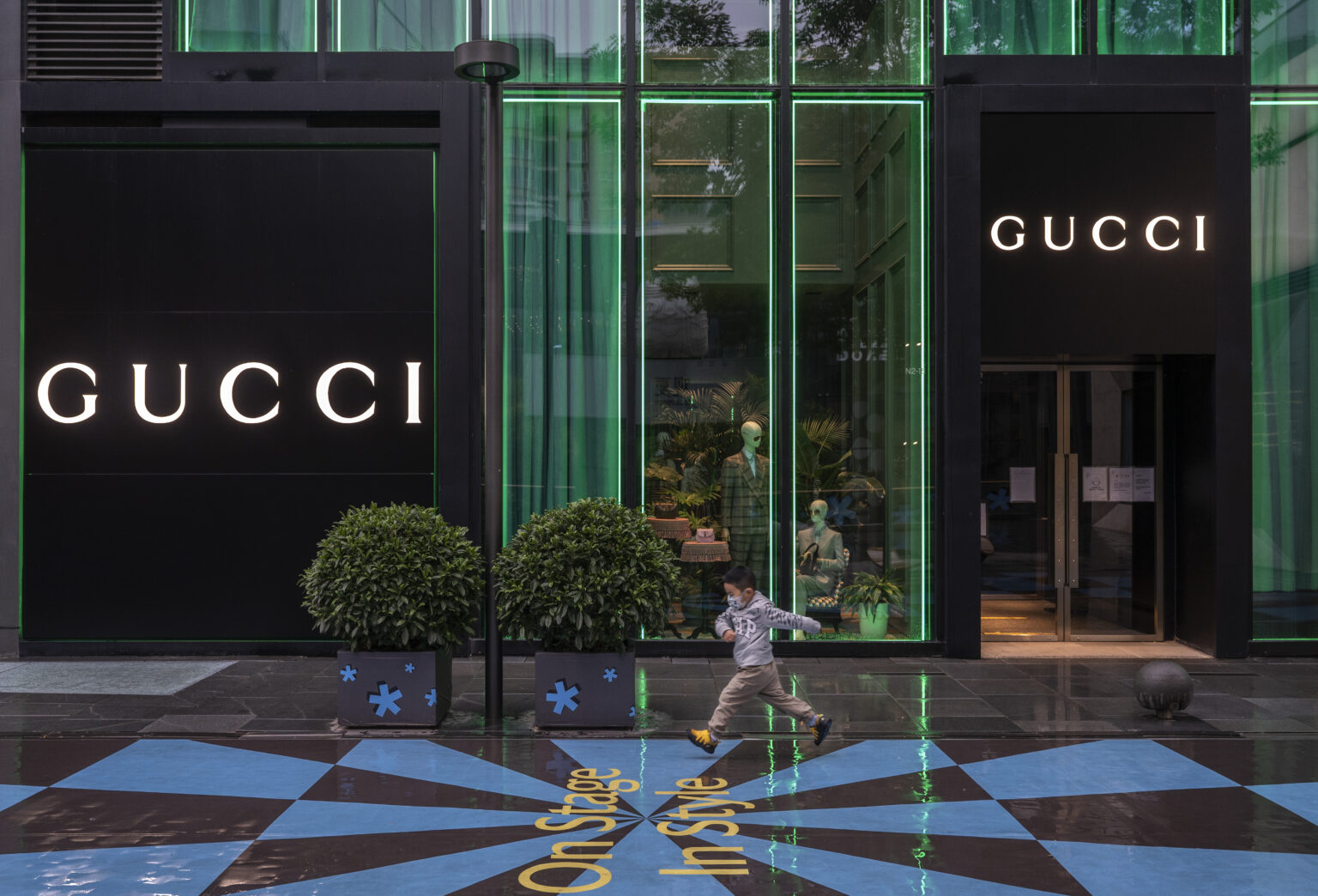The luxury industry, with the exception of Hermés, is currently undergoing a contraction. Brands are closing underperforming stores and canceling expansion plans.
Gucci, however, is particularly hard hit, with shares falling to under $24—the lowest point since 2018. This is troubling news for Kering. Gucci represents more than half of its holdings. The holding company’s stock has been on a steady decline since March, down nearly 44% in less than eight months.
The recent downturn wasn’t entirely unforeseen. Since the exit of Alessandro Michele from the tumultuous house of Gucci, it seems all has not been well. Early warning signs of trouble were visible but largely dismissed as minor issues.
Earlier this year, the luxury brand reported an 11% revenue decline year-over-year, leading to a swift 9% drop in the stock price of its parent company.
The Departure of Alessandro Michele
Under the leadership of then-creative director Alessandro Michele (2015–2023), Gucci, saw its revenue more than double from €3.9 billion in 2015 to nearly €10 billion in 2021. Between 2020 and 2021, Gucci saw a 30% surge in revenue.
Michele’s designs for the brand are described as highly eclectic, mixing gender fluidity, maximalist aesthetics, and a celebration of individuality. Michele was responsible for bags, shoes, clothing, store design, and marketing. His vision and designs soon became the brand’s full identity.
Michele wished to make Gucci more accessible to the younger generations and aspirational buyers and entered partnerships with North Face, Disney, and the Metaverse.
Under Michele’s leadership, Gucci became more relatable in a radical departure from its legacy aesthetics. The brand’s marketing effectively leveraged social media to grow its millennial and Gen Z consumer base.

Michele’s creative approach delivered strong results for Gucci, leading to a significant rise, but the model ultimately lacked long-term viability.
Alessandro, however, was steadfast in his direction and paid no heed to the changing winds. He achieved his goal of appealing to a younger demographic and made Gucci more accessible—from celebrities to the kids at the corner store. But at a price.
Gucci and the Black Swam
The pandemic’s disruption to global trade shifted consumer preferences away from maximalist designs toward a trend of “quiet luxury.” As a result, Michele’s target aspirational buyers pulled back on luxury spending. Meanwhile affluent consumers distanced themselves from Gucci, as its mass appeal diluted its high-status allure.
The brand’s dependency on the Asian market contributed notably to its declining performance. Gucci is estimated to get more than a third of its sales from China, whose recovery from lockdowns has been sluggish.
The brand started to evoke associations with of club promoters and streetwise entrepreneurs instead of an exclusive luxury class reserved for society’s elite. This dissonance coupled with several scandals under Michele’s tenure pushed most of its wealthiest consumers to Hermés and Louis Vuitton.
A New Era Under Sabato de Sarno
By the end of 2022, Kering announced that Michele Alessandro would be “stepping down” as the brand’s creative director. In January 2023, the House of Gucci hired Sabato de Sarno of Prada, Dolce and Gabbana, and Valentino. Meanwhile, Alessandro would essentially go onto take the vacancy left by de Sarno as Creative Director at Valentino earlier this year.
Sabato de Sarno is tasked with restoring Gucci’s exclusivity and heritage-driven, old money luxury appeal by directing its style back towards its roots.
Early initiatives showed promise for attracting a high-net-worth clientele. His debut collection, titled Ancora (Italian for “again”), embodies minimalism, sophistication, and timeless elegance. De Sarno’s aesthetic incorporates refined silhouettes, muted colors, and subtle textures—a distinct and intentional distancing of Gucci from the maximalism of the Michele era.

While turnarounds don’t happen overnight, initial results look bleak. Kering reported that Gucci’s revenue was down 20% in 2024 compared to the first half of 2023.
Gucci’s story serves as a reminder that even the most storied brands must continuously balance innovation with authenticity. As the luxury landscape evolves, will de Sarno’s vision of heritage and exclusivity bring Gucci back to its roots without stifling its modern edge? Or has the era of accessibility irreversibly shifted the expectations for luxury consumers?
As Gucci recalibrates, the brand’s ability to regain exclusivity in an increasingly democratized market could determine not only its future, but also serve as a bellwether for the luxury industry’s direction as a whole.


